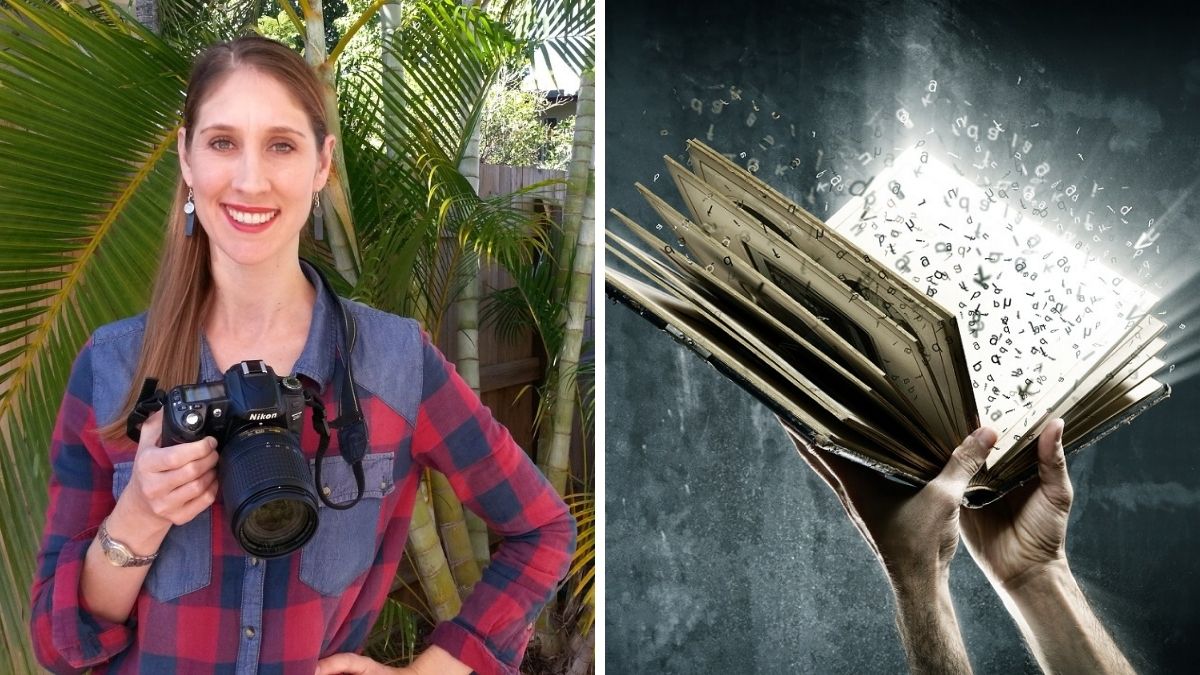
Amazing secrets of visual story writing to use in your book
My son recently turned four and was given a new box of Lego.
He loves Lego and can play with it for hours.
With only a few coloured blocks he can create a “firetruck with an in-built helicopter landing pad” or a “police car on a flying train”.
These might be basic, abstract constructions but the point is he doesn’t need many blocks to get his imagination cranking!
Likewise readers use our words to visualise the stories we write about in our autobiography, memoir, biography or life-story project.
We want to transport our audience back in time to understand and ‘see’ our memories.
But how to do this well and without writing a tome?
Today I highlight some key visual writing ideas to keep in mind as you plan, write, polish and publish your book.
Getting set for visual writing
An extreme version of visual storytelling would be an old silent movie.
Filmmakers and actors didn’t have the luxury of ‘telling’ an audience what was going on they had to ‘show’ them.
There are a few key ways to do this, the first being through setting.
Settings are the foundation of all stories.
Get this right in your writing and you are halfway to great visual storytelling.
Settings you could describe include: your home, neighbourhood, town, school, workplace, social climate, etc.
Some writers even thinking about each setting or location as a living character with a mood and tone.
This perspective can really help you frame setting descriptions in a powerful way.
Visual writers always set the scene.
Related article – Super settings: Setting examples and how to write the setting for your life story

Power of character description
Once you have set scenes visually we can do the same with characters.
You might not think you have ‘characters’ in your stories but you do!
Your parents are characters, so too are your siblings, extended family, friends, teachers and workmates.
Introducing a character is a wonderful opportunity for visual writing.
You can describe their appearance, dress, habits, frequent sayings or favourite settings.
No need to write pages and pages for each character.
A few key points will usually be enough to fire your reader’s imaginations.
Related article – Everything you need to know about making characters sparkle in your memoir
Drama of visual storytelling
Another chance for visual writing in your book is via action or plot.
Again, instead of telling readers straight up what happened use a story to explain what went on.
For example, maybe you want to write about studying for your high school or university exams.
Instead of writing “I was really stressed out and exhausted from studying” include a short snippet about:
“How I slept walked out of the house one night before exams and was found by my father trying to climb over the front verandah.”
This not only tells the reader you “were stressed” but how deeply the exams were affecting you and your family.
Related article –What makes a good story: dialogue writing, suspense writing and other writing techniques
Magic of story details
As we write our settings, characters and key memories there are many chances to paint visual pictures for readers.
One more great way to do this is to sprinkle in memorable details.
These could be details you remember that are sensory: saw, heard, smelt, tasted, felt.
Details can also be symbolic: an open/shut door, rising/setting sun, colours such as red for love or white for peace.
And bonus snippets like short flashbacks can also offer powerful extra details.
Related article – Story detail: Identifying key details in a story to make your autobiography shine
Final say: Visual writing
When you are writing remember your readers want to be taken into the world of your book.
With a few key visual words you can help bridge this gap of memory to imagination.
Writing visually means: describing settings, introducing characters, showing drama, and adding choice details.
Just like my son with his birthday toys, we are all born with the ability to tell stories and tell them visually.
Have faith in your memories and have fun playing with words.
Happy writing!
Free gift!
Writing an autobiography, memoir, biography or other life-story project can be daunting! My free Structure Success video training can help you get started without feeling overwhelmed. Sign up here or fill in the form below.
Your say
Please let me know what’s your favourite visual writing tip or idea. I always love hearing what works for different people. Drop me an email or leave a reply in the comments section at the end of this article.
Get in touch
Got a question or idea for an article? You can let me know here!
Don’t miss an article
Sign up here or fill in the form below to get instant notifications when new material is published.
This article first appeared on the website Forever Young Autobiographies.com.
